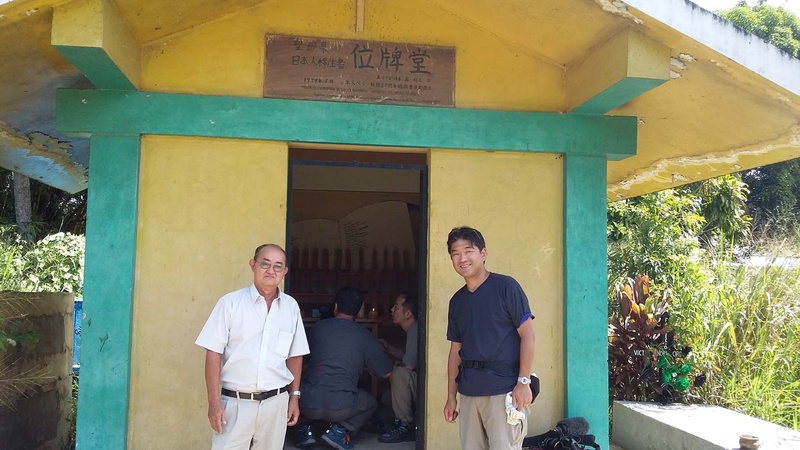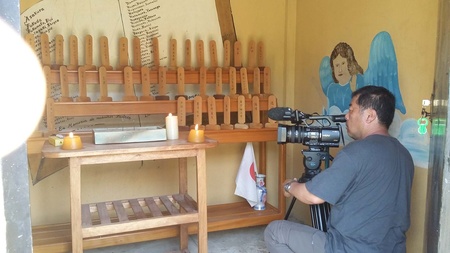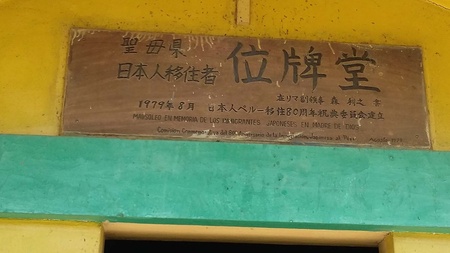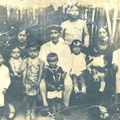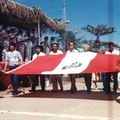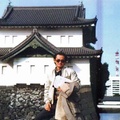Those of us who worked as dekaseguis, as tourists, as interns in Japan, or watched cable television in our countries, know the importance and role of NHK (Nippon Hoso Kyokai = Japan Broadcasting Corporation) And for a mortal like me, to be unexpectedly told that this Japanese radio company wants to interview me, it was an unexpected surprise. Therefore, in the calendar of my long existence, there will be a day to remember, Tuesday, April 7, 2015, when the same director of NHK travels to Puerto Maldonado to interview me.
The story begins when in January 2015, an article of mine about the Japanese and the Nikkei community in Madre de Dios was published in Discover Nikkei, with Mr. Daisuke Isokawa, a Japanese resident in Lima-Peru, who served as the link for this interesting interview. Surely Japanese tourists know Peru and are interested in knowing the archaeological wonders that exist along the coast and in the mountains, but they are very little attracted by tourism to the Amazon and even less so if it is Madre de Dios. , considered until recently as the Cinderella of Peru, due to its relative isolation and little development.
My first contact with NHK in Puerto Maldonado was Isokawa san, responsible for coordinating the group and making contacts with the people and companies that might be necessary for a 20-day trip by the Japanese and in truth from the beginning, I found this little Japanese nice because of his excessive gestures of kindness, politeness, too respectful, a very ceremonious Japanese for everything and I didn't know whether to shake his hand or bow in greeting, typical of the Japanese. Isokawa's first mission in Puerto Maldonado was to meet me and have the greatest details about the Japanese immigration to Madre de Dios, what traces remain of that passage through these lands and so he spent the first day talking at length about something that we hardly know because in In truth, very little has been written about our ancestors. We spoke with older Nikkei who still remain, such as Mr. Hernán Kameko, Santos Kaway and obviously I informed the President of the Peruvian Japanese Association of Madre de Dios about the trip of this group.
The setting for the interview was the old cemetery of Puerto Maldonado, where the 79th Commission of Japanese immigration to Peru built the Mausoleum in honor of the immigrants in 1980. There are the ijai (tablets with the inscription of the deceased Japanese), this building being the main footprint or trace of the passage of these intrepid men who came from so far away. This foreign visit has shown carelessness, forgetfulness towards our deceased, on the part of not only the responsible entity but also our Nikkei social organization. Visiting the Pioneer Cemetery is entering a forest in the middle of the city, a place where cleaning is carried out once a year (November 2, Day of the Dead), the tropical climate creates the right environment for weeds to grow quickly and completely covers the graves and that in many cases, these no longer exist, given the total abandonment of their relatives. Due to this situation, some Nikkei, like my Ikeda family, have moved the remains of all the ancestors to the new cemetery.
The NHK group was made up of Mr. Munenobu Fujimura, Masato Hosono, Katsumi Watanabe, Daisuke Isokawa, with Japanese actor Genki Sudo acting as a reporter. The entire interview revolved around the migratory process of this human group, what were the contributions or contribution to local-regional growth and development, what other traces remain and other questions that for 90 minutes had me on edge, especially when they asked me to do the prayer or devotion ceremony for the deceased, something that I actually knew very little or nothing about because unfortunately, our ancestors tried to hide their culture and not transmit it to their descendants for factors or reasons that it is better not to remember. In the photograph you can see the plaque placed in memory of the immigrants in the Puerto Maldonado Mausoleum.
NHK's main mission was to film a Tourist Program to Madre de Dios and for this they rented a 10-passenger vehicle and a 4x4 Hi-Lux van in which the driver throughout the trip was the Japanese actor. This 20-day trip filming the wonders of nature in its three levels: jungle-jungle eyebrow-highland zone, that is, gradually climbing from 210 meters above sea level in Puerto Maldonado, reaching Inambari (370 meters above sea level) and the final destination, the snow-capped of Ausangate (the largest snow-capped mountain in the Vilcanota mountain range, at 6,372 meters above sea level). This chain of snow-capped mountains is a wonder of nature but it is a colossus that is dying (according to reports published in the newspaper La República, since 1985, this snow-capped mountain has lost 41% of its glacial layer), as a result of global warming. This phenomenon is reproduced on a regional-national and global scale and the impacts are and will be very great for humanity.
The southern interoceanic highway is a megaproject that was concessioned by the Peruvian State to: Section 2 (Urcos-Puente Inambari=300 km) and Section 3 (Puente Inambari-Iñapari= 403 km) to CONIRSA (a consortium made up of the contractor Odebrecht of the Brazil and Graña y Montero of Peru) and section 4 (Inambari-Azangaro Bridge: 210.8 km. delivered to the INTERSUR Consortium, made up of Andrade Gutiérrez, Construcoes e Comercio Camargo Correa SA, Constructora Queiroz Galvao SA (Brazil), whose gigantic, including sections 1 and 5, exceeded 2.8 billion dollars.
Going down the high plateau area, along the Vilcanota mountain range, the road descends towards the edge of the jungle and its intermediate point is the Inambari bridge (border with Cusco) where you can see the hills completely covered by diverse vegetation and continues descending to the Amazonian plain until its lowest point in Puerto Maldonado (210 meters above sea level).
Here I would like to leave as a conclusion something that we do not know how to take advantage of in countries like ours: Madre de Dios is the capital of biodiversity of Peru, its main natural wealth is its varied ecosystem, therefore its great opportunity is to develop tourism on a large scale but This activity generates needs for transportation, accommodation, food, recreation and leisure. However, great weaknesses persist in terms of deficits in social services, economic infrastructure, food security and, above all, citizen insecurity. Its emblematic problems (integration highway, electrical interconnection, Billinghurst Bridge) have already been resolved, but its main cities grow in a disorderly manner, but no further development is observed. A brief glance as soon as the tourist lands is enough to see that there is still a lot of progress to be made.
© 2015 Santos Ikeda Yoshikawa


